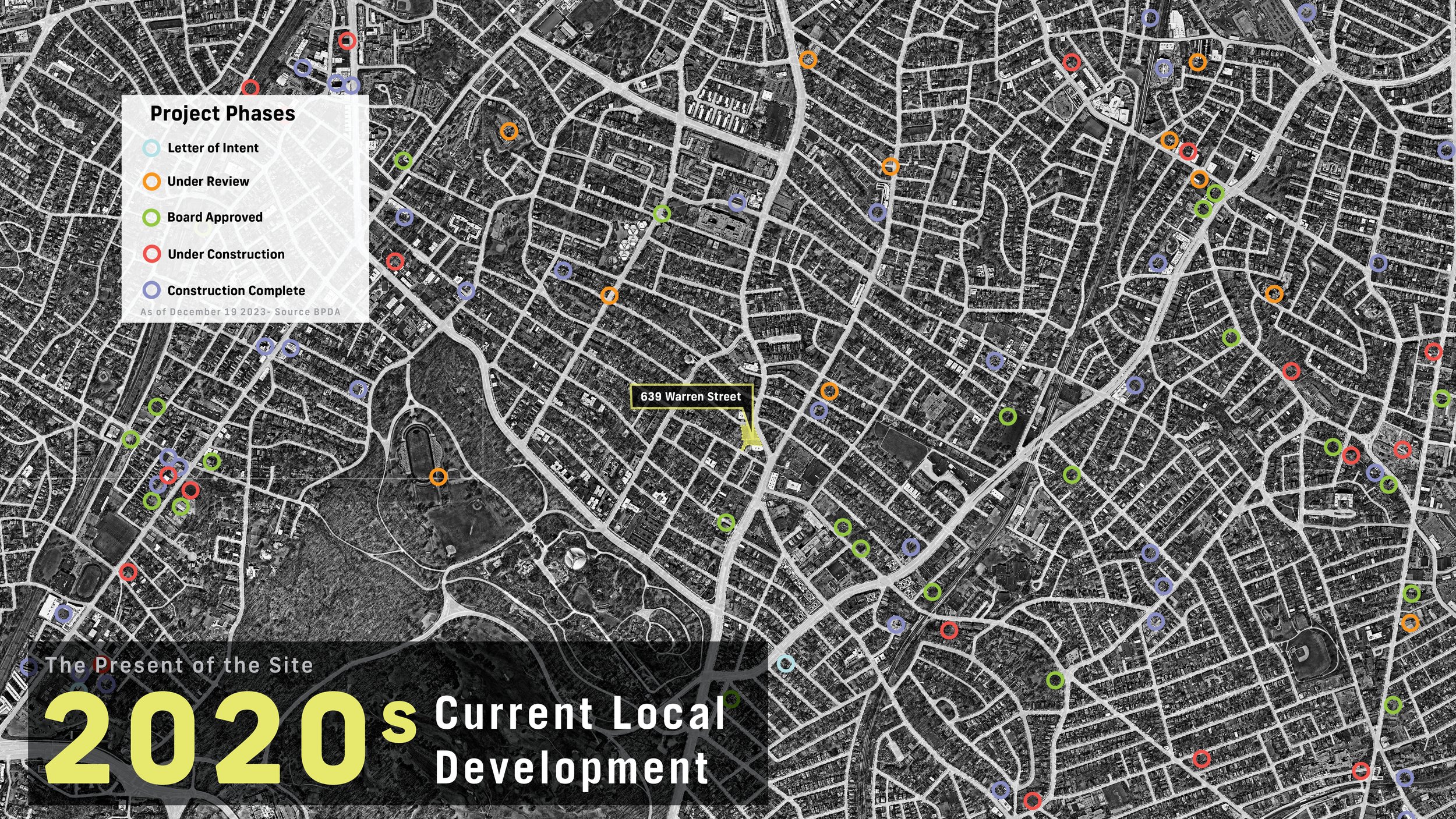History of the Site
As part of the process for the development of the 639 Warren Street Parcel, it has been critical for our team to understand the complex and layered history of the site.
Following the annexation of Roxbury to Boston in 1868, the neighborhood was faced with rapid development. While slowed initially by the economic depression of 1873, the street railways and their connection to downtown drove rapid development of the Grove Hall area.
From the early 1900’s to the 1950’s Grove hall and surrounding areas were important centers of Jewish life and religion, home to some of the largest congregations in New England. In the 1930’s the Home Owners’ Loan Corporation [HOLC] created maps of major cities in America delineating neighborhoods on a scale of A to D, D being “Hazardous”, to determine where one could receive subsidized mortgages and where one could not. Grove Hall lies between “C” and “D” rated zones, rated so explicitly because of the Black, Jewish, and immigrant populations in Roxbury and Dorchester.
The Federal Housing Act of 1949 provided federal funding for so-called ‘urban renewal’, including ‘slum clearance’ programs. Working-class neighborhoods and communities of color, many of which were the same neighborhoods given “C” or “D” ratings by the HOLC, were targeted for demolition, displacing residents in favor of more expensive housing units or commercial spaces.
While the Federal Housing Act provided funding for the construction of 800,000 public housing units, the program fell far short of its goal, providing little assistance to communities with existing or emerging housing shortages.
The Washington Park Urban Renewal Program was the third largest government financed urban renewal project in the country and included plans for the 639 Warren Street site that resulted in the clearance of the site for a future parking lot.
In the wake of urban renewal, the Grove Hall area underwent an extended period of upheaval and transition. As the Civil Rights Movement swept the nation, the neighborhood immediately surrounding 639 Warren St became a hub for community led activism in Boston. This includes the enduring presence of organizations such as the Freedom House, whose activism included support for Operation Exodus to combat the racial segregation of the Boston School system. Three blocks from 639 Warren St is also the Grove Hall Welfare Office which served as the catalyst of a defining event of social uprising in 1967 when the Mothers for Adequate Welfare sit in escalated and resulted in 3 days of rioting along the Blue Hill Avenue corridor.
In the 1970’s and 1980’s the cumulative effects of the Dudley Square development plan, increasing property values while rent control laws restricted displacement and free speculation, blockbusting practices and 3000 suspected arson cases in the city of Boston resulted in a drastic decline in population. While it has steadily increased in recent history Roxbury has experienced a 45% loss in population since 1950, the largest loss of any neighborhood in the city of Boston.
Today, the site is surrounded by a wealth of ongoing civic activism and community based organizations, anchors of local culture, a diverse faith community, and a vast network of public and private educational institutions. There has been ongoing local development in the area, however within a 1/4 mile radius of 639 Warren Street there are only 4 development projects under review by the BPDA.
In addition to being one of the major transit intersections of Roxbury, the intersection of Warren Street and Blue Hill Ave is the focus of several proposed transit network alterations intended to improve service and connectivity. While 639 Warren Street is already directly located at a high traffic bus station, the proposed Silver Line extension would increase transit access for residents and provide more viable alternatives to individual vehicle ownership.




















